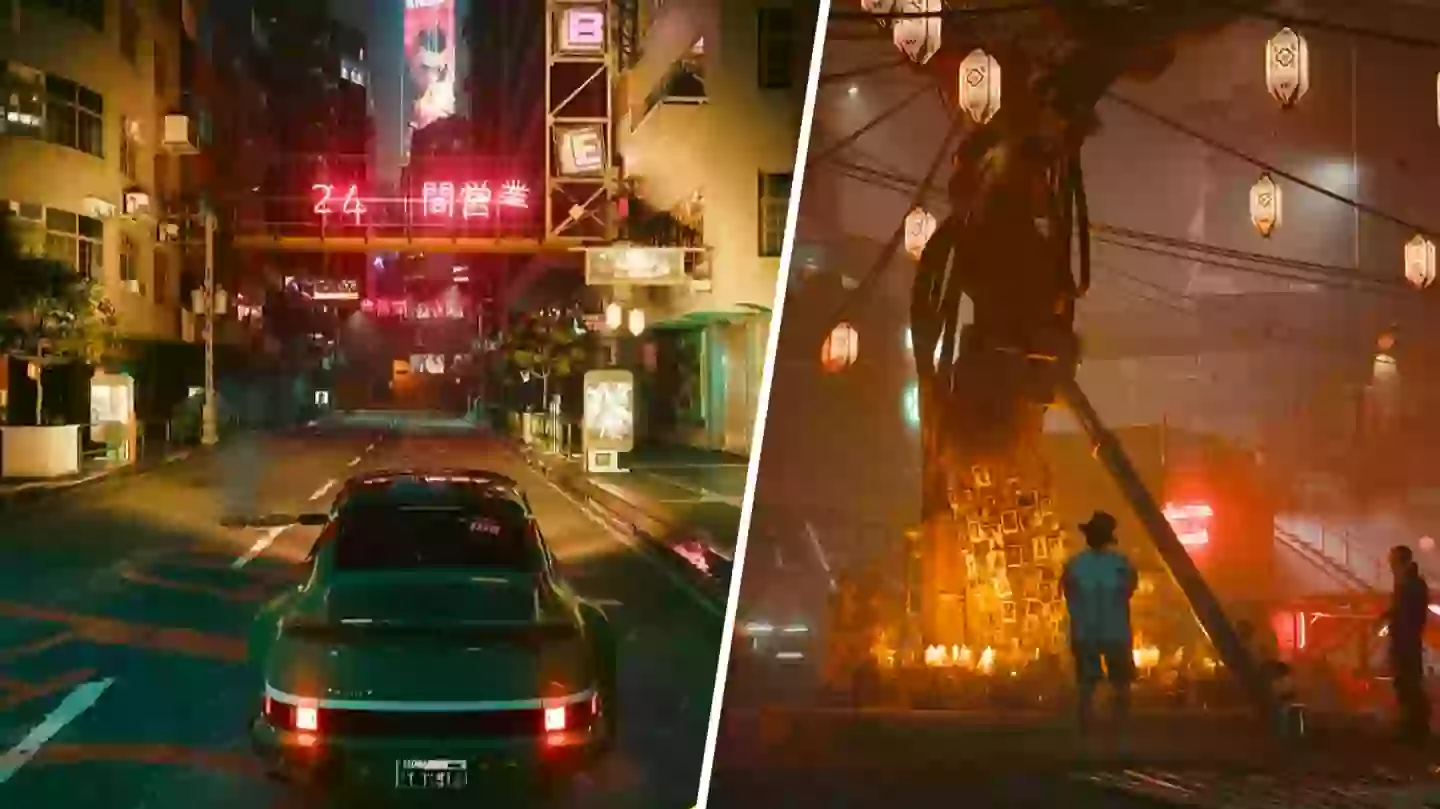
During Gamescom GAMINGbible sat down with NVIDIA to take a look at DLSS 3.5, the new AI-powered upscaling tech that, among other things, accelerates ray-tracing to make PC gamers look noticeably more beautiful.
If you're not a PC gamer it can be a little hard to understand - or even really care - about all the terms companies like NVIDIA throw around. But when the results are as good as they are, you certainly start to sit up and take notice.
As GAMINGbible squeezed into a swelteringly hot booth with a bunch of other journalists and five incredibly hot gaming PCs, we were treated to a look at NVIDIA's latest update in action via Portal, Alan Wake 2, and the real star of the show: Cyberpunk 2077: Phantom Liberty.
Advert
Take a look at the new tech in action below!
It's hard to put into words just how impressive this demo was. While the video above is undoubtedly a glorious teaser, seeing it in action on a real gaming PC, in real-time, was something else.
The way the light now shimmers off of puddles and the neon street signs float hazily atop the slick surfaces of Night City's roads... these are small details in the grand scheme of things, but they add up to create something so much more immersive.
Advert
DLSS 3.5 will massively boost ray tracing across all RTX-series GPUs as far back as the RTX 20 series, though NVIDIA notes performance will obviously vary from game to game. The team is also focusing mostly on titles that offer path tracing (a more advanced and full-bodied form of ray tracing).
Cyberpunk 2077 will get full support for DLSS 3.5 with the launch of Phantom Liberty on 26 September, which will also include the impressive path tracing update to really kick the game up a notch. Now the only question is can your PC handle it?
Topics: Cyberpunk 2077, CD Projekt Red